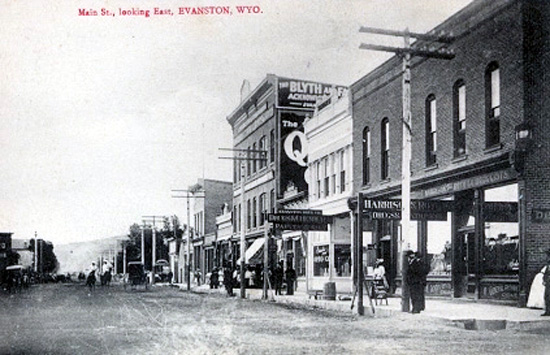
Main Street, approx. 1900, Evanston, looking east.
For opposite side of street see next photo. The first building on right was razed in the 1980's to make room
for a parking lot. At various times it housed different mercantile establishments.
In 1929 is was remodeled as the Phoenix Hall.
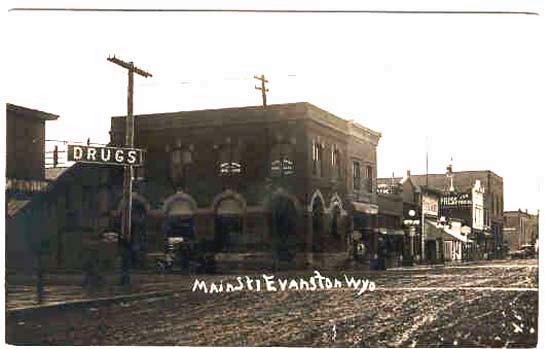
Main Street, approx. 1910
On the left is the Evanston National Bank constructed in 1907. On the second floor
were physicians' offices.
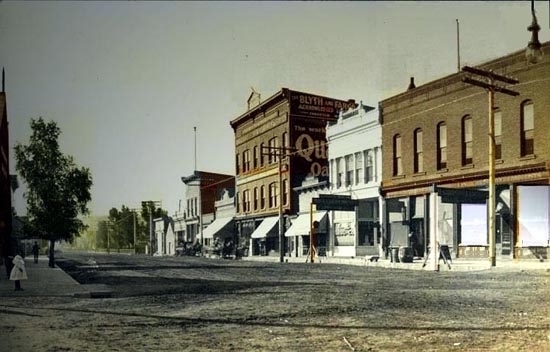
Blyth and Fargo Mercantile
The
Blyth and Fargo Building at 927 Main Street was built by Scottish-born
Thomas Blyth (brother-in-law of Harvey Booth), Charles Pixley and Griffith Edwards in 1872. The third
floor was added in 1887 by Blyth and Lyman Fargo who bought into the business after
the withdrawal of Pixley and Edwards. Blyth and Fargo operated a chain of department stores in
Wyoming, Utah and Idaho, whose motto was "We sell everything but fresh meat and drugs." Ultimately,
the store sold fresh meat.
The store would even deliver the groceries. The business closed after 109 years. The building was renovated in 1985 and now houses
professional offices. In addition to Blyth and Fargo and the
various mercantile establishments, one of the leading clothiers was Isadore Kastor's
store. Kastor opened his business in a meat market in 1885 and moved into his
own building in approximately 1887.
Kastor served as Mayor of Evanston 1913-1915.
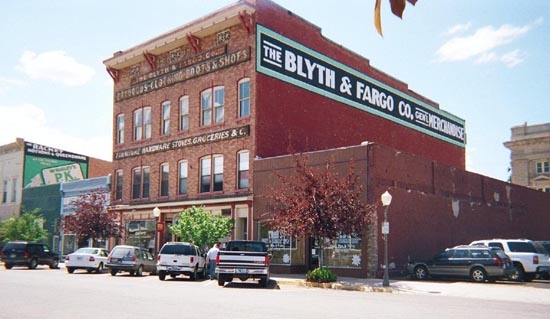
Blyth & Fargo Building, 2003, photo by Geoff Dobson
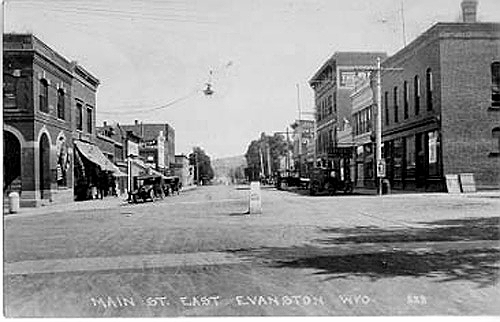
Main Street, Evanston, approx. 1918
Compare this scene taken during World War I with the identical 1970 view in the next photo. The building on the corner on the right housed the
Uinta Mercantile. Leaning against the wall is a sign advertising war bonds.
On the second floor were the offices of the Green River Coal Co., and
a photography studio. Further down the street on the south side, on the right, is a drug store
and a billiard parlor. Across the street from the Blyth and Fargo Building was the dental office of
Dr. B. L. Winslow. The Palace Grocery, 917 Main, on the south side of the street, would
occassionally during "R" months receive fresh Chesapeake oysters by Railway Express.
Dr. Winslow dearly loved the oysters. He was known, when the oysters came in, to
abandon patients in the chair so that he could cross the street to slurp down the delicacies.
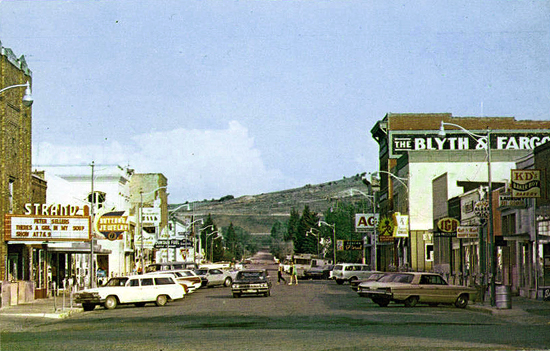
Main Street, 1970.
The Strand Theatre on the former site of the Evanston National Bank
was constructed in 1918 by Arthur Bowen who had previously operated a picture show on the ground floor of
the Masonic Hall. The theatre was gutted by by an early morning fire on
May 7, 2007. In the photo, the Strand marquee advertises "There's a Lady in My Soup," starring
Peter Sellers.
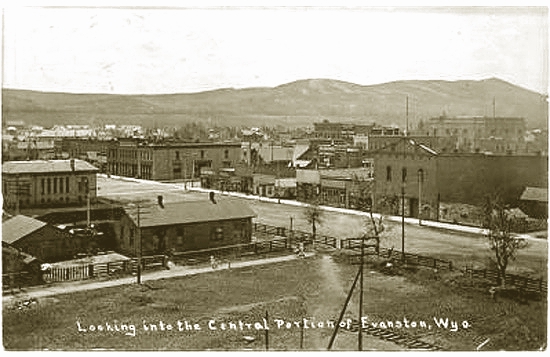
Evanston, business district, 1910.
The two-story building with the false gable end immediately to the right of center
in the above-photo is Down's Opera House on Front Street. With the
advent of talking movies and the construction of the newer Strand Theatre, the Opera House
closed and was converted into the Inter-Continental Garage depicted on a subsequent page. The interior was gutted and a second floor added with an
elevator for the cars. Downs was also a partner with James M. Tisdel in the
operation of the Wyoming Hotel, which, as a part of the attraction for its
saloon, kept a bear.
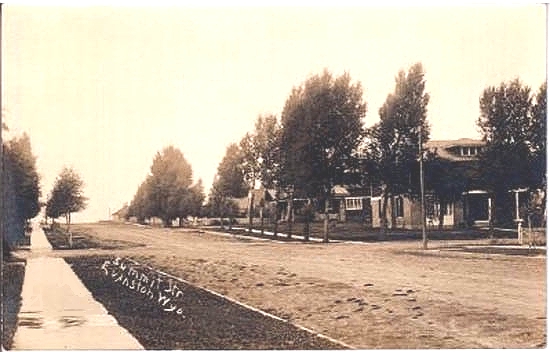
Summit Street, approx. 1930.
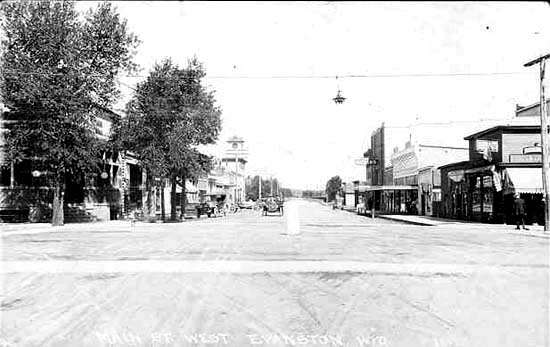
Main Street, looking west
Next page: Evanston continued.
|